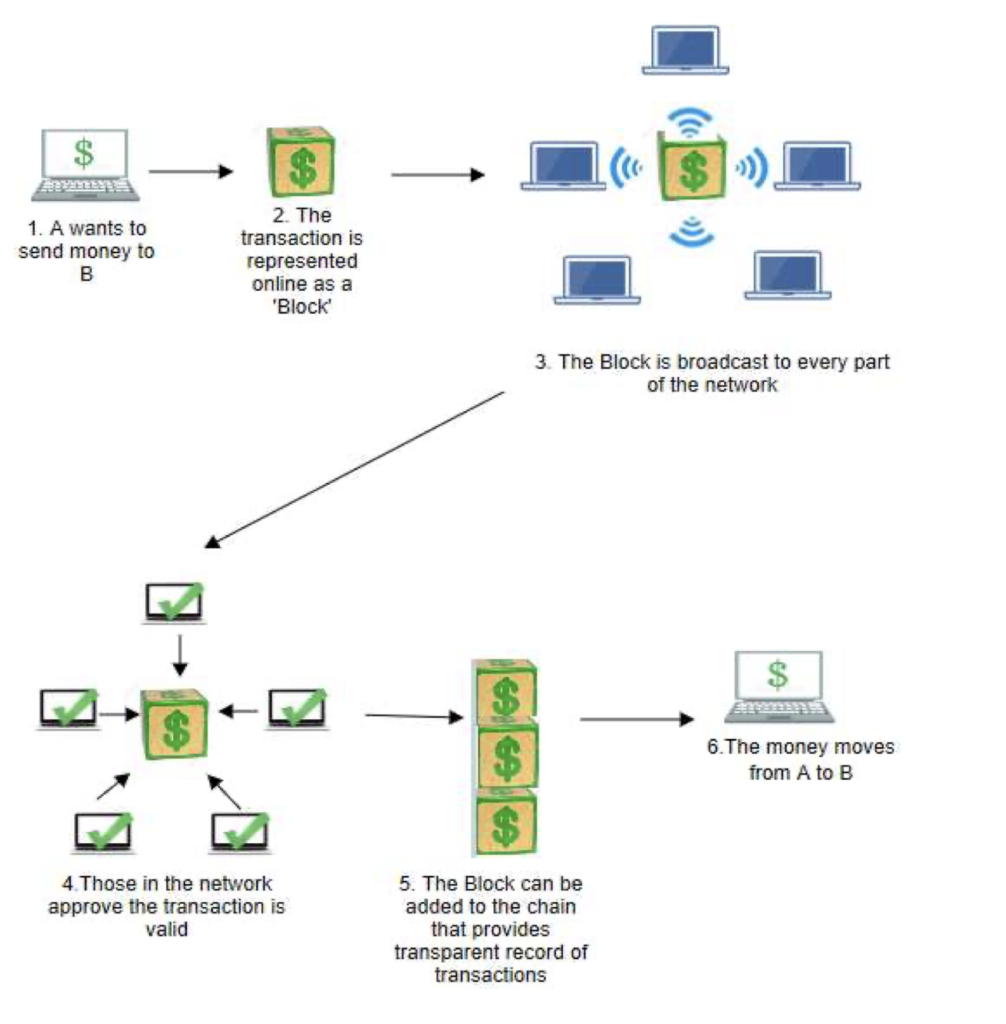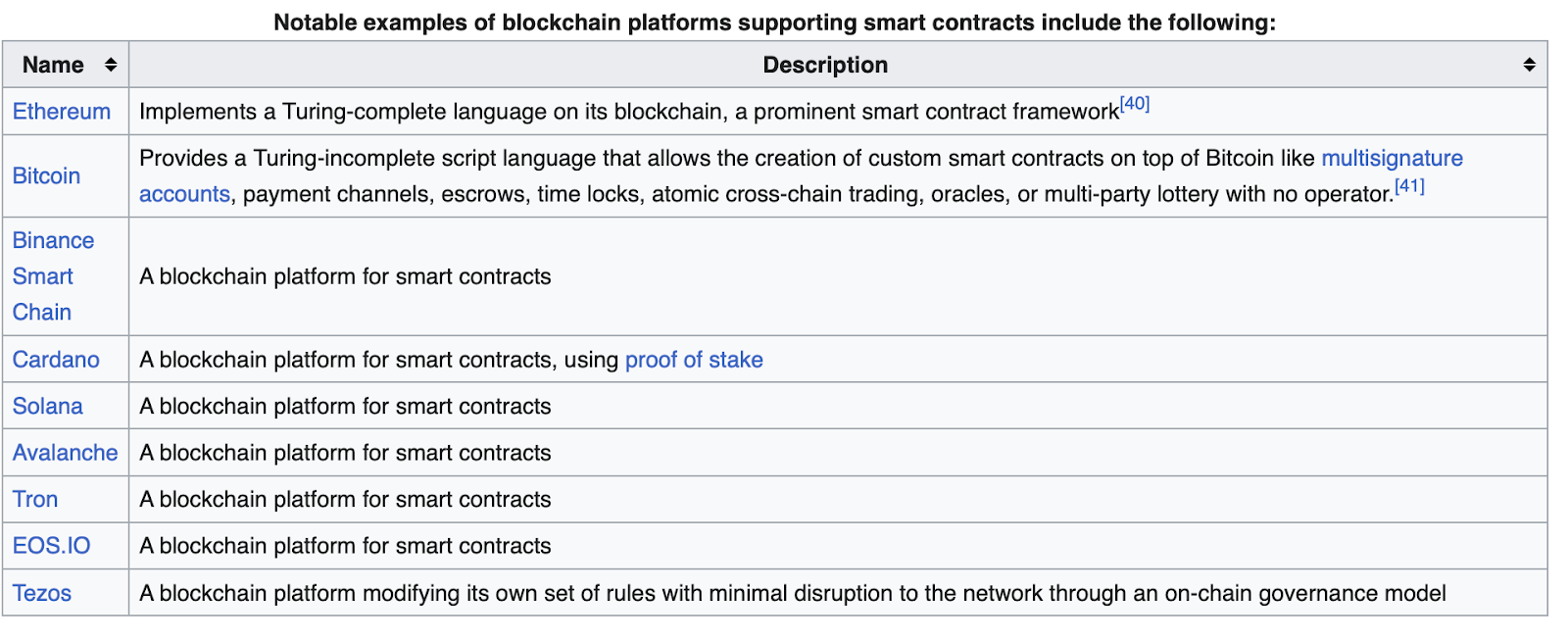Abstract
The emergence of a wide assortment of cryptocurrencies has dynamically transformed the financial market, offering various decentralised alternatives to traditional currencies. Digital coins are competing on a par with plastic and paper currencies, challenging the long-standing reign of fiat money. In this paper, we probe into the proliferation, key features and advantages of cryptocurrency in order to understand what makes them so valuable for our finances. We examine the underlying blockchain technology, diving into its definition, technical aspects and how it provides security to cryptocurrency. Furthermore, we assess the major cryptocurrencies dominating today’s markets and the challenges encountered in their use.
We strive to illuminate the profound impact of widespread cryptocurrency adoption on the established financial paradigms, from monetary policies and global financial inclusion efforts to economic stability outcomes and consumer behavioural patterns. Through comprehensive analysis and scholarly inquiry, we aim to provide a comprehensive insight into the ever evolving landscape of digital currencies and their profound influence in the future of financial markets.
1. Introduction
1.1 Cryptocurrency
Cryptocurrency is one of the many technological advancements we have been introduced to in the twenty-first century and it is expected to bring major changes to the finance industry. Cryptocurrency can be defined as a virtual currency (Frankenfield, 2023). If the word is broken down and you only consider its prefix, “crypto,” you are informed of some of its security features. The prefix “crypto” reveals that cryptocurrencies make use of several encryption algorithms and cryptographic techniques to protect themselves from online threats (Frankenfield, 2023).
Cryptocurrency, unlike fiat currencies, which are governed by central authorities, is distinguished by its decentralised nature, lacking any central authority (Frankenfield, 2023). Fiat money is a currency issued by a government, its value fully reliant on the government that issues it. This makes it the direct opposite of cryptocurrency (Chen, 2023). Fiat currency is what a large portion of the global population uses at the moment. Examples of fiat currencies include the U.S. dollar, the rupee, the rand, and many more. The main difference between fiat money and cryptocurrency is that there is government interference in the fiat money system.
The advantages and disadvantages of cryptocurrency are discussed further in the paper, but it is important to also acknowledge some advantages and concerns regarding fiat currencies, which can be taken into consideration when reading the rest of the paper. One major concern regarding fiat currencies is inflation, and an advantage is that production is cost-effective (Chen, 2023).
In order to get a better understanding of what cryptocurrency really is, it is important to look at the history of cryptocurrency. In January 2008, Bitcoin was the first cryptocurrency created and the actual identity of the creator remains unknown to this day (Kriptomat, n.d). The homepage of Bitcoin was created in 2008 and was left without a creator. Later that year, on the 31st of October, a person/organisation revealed that their name is Satoshi Nakamoto (Kriptomat, n.d), however it’s not public knowledge who or what Nakamoto exactly is. Miller (2016) suggests that the creation of cryptocurrency can be seen as a source of mystery. It is safe to assume that he refers to the ongoing mystery of the original creator(s) of Bitcoin.
In 2009, the dawn of Bitcoin mining marked a pivotal moment, initiated by Nakamoto (Kriptomat, n.d). This process, integral to the validation of blocks within a blockchain (Frankenfield, 2023), became the bedrock of cryptocurrency’s operational framework. The subsequent year, 2010, bore witness to what is widely regarded as the maiden Bitcoin transaction, attributed to Laszlo Hanyecz. 2011 emerged as a pivotal juncture with the introduction of novel cryptocurrencies, spurred by escalating interest in Bitcoin’s decentralised ethos (Kriptomat, n.d). However, the year 2014 was tainted by the sector’s largest theft, wherein a staggering 80,000 coins were pilfered, with the perpetrator eluding capture (Kriptomat, n.d). This incident sparked discourse attributing cryptocurrency’s vulnerability to its decentralised nature. Fast forward to 2017, a substantial influx of trading platforms facilitated unprecedented ease of access, enabling enthusiasts to engage in buying and selling activities (Kriptomat, n.d). Coinciding with this surge, Bitcoin surged to an unprecedented value of $20,000, marking a historic zenith (Kriptomat, n.d). Nonetheless, this meteoric rise proved unsustainable, culminating in a subsequent decline and the collapse of numerous projects. Presently, the cryptocurrency landscape is dominated by initiatives geared towards addressing tangible societal challenges (Kriptomat, n.d).
The criticism regarding the functionality of cryptocurrencies is no secret, but Haldane (2023) presents a different perspective. Haldane (2023) compares the initial reaction towards cryptocurrencies today to the initial reaction towards physical money in ancient times. Neither were good. Today, there are thousands of different cryptocurrencies all with one thing in common: they all essentially use Bitcoin as a skeleton. Every type of cryptocurrency you come across today can be described as a variation of Bitcoin (Miller, 2016).
1.2 Major cryptocurrencies
The ever-evolving myriad of cryptocurrency now boasts over 8,000 types of digital currencies circulated all over the internet (8,823 as of February 16, 2023) (CoinMarketCap, 2023). Each coin has a specialised blend of various protocols and features, completely transforming the financial sector we know.
In recent times, the financial landscape has been revolutionised by the rise of a wide assortment of digital currencies, offering a decentralised alternative to its current forms. Bitcoin can be viewed as the prime example.
From its creation to its worldwide fame, Bitcoin has become an integral part of today’s finance sector. The value of Bitcoin saw a steep rise from $13 in January 2013 to $438 just 16 months later; the total value of Bitcoins in circulation amounted to $5.6 billion (Haigu & Beach, 2014). This trend can also be seen in Ethereum which has become the second most sought-after cryptocurrency, rising from $0.3 per coin in 2013 (Commodity, n.d.) to an estimated value of $5,000 in 2024 (Forbes, n.d.).
According to Dandapani (2017), the proliferation of digital currencies is driven by the desire for heightened ecommerce efficiency through the minimization of time and transaction costs. Moreover, it might be linked to the decentralised nature and tamper-proof foundational technology adopted by digital currencies.
Although it is commonly believed that digital currencies lack intrinsic value due to their detachment from a central regulating authority, their market value can be determined by comparing exchange rates with existing fiat currencies (Giudici et al., 2020). Furthermore, many users place trust in cryptocurrencies like Bitcoin, ascribing them value due to their open-source technology and transparent transaction history access. Figure 1 illustrates the values of the major cryptocurrencies by market cap.

Figure 1: Values of the major cryptocurrencies (CoinMarketCap, 2024)
A higher market cap relates to a higher demand. There are also certain factors which affect the prices of cryptocurrencies such as demand, public sentiment, the level of competition among cryptocurrencies, as well as other payment methods such as the plastic cards and paper currencies.
1.3 Advantages and Key Features of Cryptocurrency
As a result of its advantageous system, the use of cryptocurrency has changed how some industries handle money. Key features of cryptocurrency include its decentralised structure and its existence on a network shared across many computers (Frankenfield, 2023). The use of cryptocurrency comes with many advantages, namely: the removal of third-party interference and of single-point failures, as well as the ability to easily transfer funds between parties (Frankenfield, 2023). High transactional speed and protection against inflation are also noteworthy advantages of cryptocurrency (Tambe, 2024).
The primary advantage is the elimination of third-party interference, facilitated by the decentralised structure inherent in cryptocurrencies through blockchain technology. This tends to be viewed as a vulnerability, but in fact it decreases the chances of being affected by single-point failures, which is the second advantage: the removal of single-point failures. Frankenfield (2023) states that these failures cause global crises such as the Global Financial Crisis of 2008.
The third advantage lies in the seamless transfer of funds between parties. Remittance, as defined by Murphy (2022), entails the transfer of money from one individual to another residing in a different country, often used predominantly for familial support, particularly in procuring basic necessities (IFAD, 2023). Developed nations play a pivotal role in supporting developing countries through remittance, resulting in a heavy reliance on these funds for income in the latter (Kulkarni et al., 2019). However, the exorbitant transfer fees associated with traditional remittance channels result in substantial losses, with Kulkarni et al. (2019) reporting that 10% to 15% of developing countries’ GDP is syphoned off in this manner. This poses a significant concern as developing nations, which depend heavily on remittances, lose substantial sums to transaction fees, funds that could otherwise directly benefit them. By eliminating the need for intermediaries, cryptocurrencies offer a solution to this issue. Particularly in the context of remittance, the absence of transaction fees is noteworthy (Kulkarni et al., 2019). Major cryptocurrency firms specialising in global remittance services levy significantly lower transaction fees, thereby facilitating easier and more cost-effective fund transfers.
The fourth advantage pertains to rapid transaction speeds. Traditionally, sending money overseas entails a waiting period of several days for funds to reach the recipient’s account and clear. This is often hindered by third-party interventions, a delay that can prove inconvenient when immediate or timely transactions are necessary. Transaction speeds vary depending on the cryptocurrency used, but generally, access to funds is granted once the network clears the block, a process typically completed within a few hours at most (Levy, 2023). Some cryptocurrencies, such as Cardano and Solano, boast transaction verification in mere seconds (De Best, 2024). Given the history of global crises triggered by inflation, one could argue that this advantage holds significant weight.
The fifth advantage lies in safeguarding against inflation. As noted by Frick (2022), inflation stems from a surge in demand for goods and services without a corresponding increase in supply, essentially leading to a rise in prices. While some may argue that inflation is inevitable due to population growth outpacing resource availability, cryptocurrencies offer a different perspective. Cryptocurrencies serve as a hedge against inflation. For instance, Bitcoin, a widely recognized cryptocurrency, features a hard cap on its supply that cannot be surpassed (Tambe, 2024). Consequently, the value of Bitcoin tends to rise when the rate of money supply growth exceeds that of Bitcoin’s issuance (Tambe, 2024). This model is adopted by most cryptocurrencies.
After reviewing all the above advantages, it becomes evident that cryptocurrency presents numerous benefits both for you and your finances. However, while it is imperative to examine these advantages, it is equally important to consider the disadvantages of utilising cryptocurrencies.
1.4 Challenges in Cryptocurrency
In today’s world, cryptocurrency is part of a growing trend to transition the economy to a cashless society. Many stores no longer accept cash transactions and some businesses are considering accepting cryptocurrency, such as Bitcoin, as payment for transactions (Bitcoin, n.d). As mentioned in the previous section, cryptocurrency has many features and benefits that traditional currency does not. However, as with all things, cryptocurrency is a double-edged sword. In this section, the main disadvantages of cryptocurrency that will be discussed concern its link to illegal activities, issues with governments, cryptocurrency’s involvement with global warming, and a lack of regulation.
User privacy and security are one of the primary benefits of cryptocurrency: blockchain technology makes it nearly impossible for hackers to access and obtain cryptocurrency user’s information (Simplilearn, 2022). However, due to the user privacy feature, many criminals can go on darknet markets and purchase illegal goods (such as narcotics) and services, using cryptocurrency as their payment method (Berman & Siripurapu, 2024).
Due to cryptocurrency’s uses on the darknet, governments worldwide are faced with the challenge of its proper regulation. The darknet, also known as the dark web, is an encrypted portion of the internet not available to the general public (Awati & Hanna 2024). It is known for containing a larger portion of the illegal activity that takes place on the internet. For example, while China accounts for most of the world’s Bitcoin mining, the country itself is cracking down on cryptocurrency usage, and implementing a sweeping ban on all crypto transactions (Berman & Siripurapu, 2024). In contrast, the United States, Australia, Brazil, and some Western European countries have deemed cryptocurrency legal, while Russia and Mexico have partially banned cryptocurrency. This stark difference in the regulation of cryptocurrency around the world, especially in some of the main powerhouse countries such as the United States, China, Russia, and the United Kingdom, has highlighted the difference in government regulation, country regulations, and the challenge of cryptocurrency becoming a worldwide recognized currency.
The high energy-intensive process of Bitcoin mining has led many to worry about its contribution to global warming. Global warming and climate change are both serious issues that affect the life of every organism on our planet today. While this process has been occurring for a while, over the last 100 years, the process of global warming has significantly increased as a result of the burning of fossil fuels. On the surface, cryptocurrency, and specifically Bitcoin mining, seem to have little in common. Still, a deeper dive into the energy usage of Bitcoin mining reveals yet another challenge of cryptocurrency. As Berman and Siripurapu (2024) state, Bitcoin mining is an enormously energy-intensive process, even outnumbering the electricity usage of many countries. However, proponents of cryptocurrency have proposed a solution to this problem by using renewable energy to initiate and complete the process of Bitcoin mining (Berman & Siripurapu, 2024).
In the past decade, cryptocurrency has grown rapidly and increased in popularity. Yet as a result of this increase, billions of dollars of transactions are taking place in an unregulated sector. This has led to concerns about cybersecurity, fraud, and tax evasion (Berman & Siripurapu, 2024). Cryptocurrency transactions taking place in unregulated sectors and blockchain technology regulation are also both issues facing governments worldwide. More important to the cryptocurrency business, though, is the impact of transactions in unregulated sectors on consumers. This lack of regulation has led to consumer uneasiness: if something unexpected were to happen, no country or government is responsible because cryptocurrency is free from third-party interference.
To sum up, cryptocurrency has brought in many positives, for example low transaction fees and built-in inflation protection. However, cryptocurrency has many flaws beneath the surface. From its contribution to global warming, to its role as a hub for illegal activities and its lack of regulation, cryptocurrency has encountered many obstacles to becoming a worldwide and widely accepted currency.
2. How Does Cryptocurrency Work?
2.1 Blockchain Technology
Cryptocurrency is often associated with blockchain technology, which may also be known as the foundational technology for cryptocurrencies. Blockchain technology is a chain of various blocks. Crosby (2016) defines blockchain as a distributed database or public ledger containing records of all transactions or digital events that have been executed and shared among involved parties. All the transactions are permanently stored and verifiable.
A blockchain is credited for its transparency and tamper-resistant nature. Along with consensus mechanisms (a protocol which involves the agreement of various nodes of the system on the validity of a transaction or changes in the ledger), a blockchain is also cryptographically secured (Beck, 2018). A blockchain is a decentralised immutable ledger, so rather than having a single institution control the network, it is managed by a group of computers spread all over the world. With peer-to-peer validation and the distributed structure of a blockchain, it is near to impossible to manipulate the information (Sarmah, 2018); moreover, any transaction can be traced back to its origin.
Blockchain has many real-world applications that expand beyond cryptocurrency; for example, supply chain management, healthcare data management, identity verification or voting systems. There are also certain types of blockchains: mainly public blockchains, private blockchains, semi-private blockchains, sidechains, permissioned ledger, distributed ledger, shared ledger, fully private proprietary of blockchain, tokenized blockchain and tokenless blockchain (Sarmah, 2018). Beyond the types of blockchains, Figure 2 provides a brief overview of the working of a blockchain in a financial sense.

Figure 2: How Blockchain technology works (Sarmah, 2018)
2.2. Technical Aspect of the Blockchain Technology
As stated previously, blockchain is a link formed by various nodes or blocks. Each block records the transactions taking place. There are two digital signatures for a transaction to take place completely: the public key and private key. According to Hashemi et al. (2019) a public key is similar to an email address or a bank account number, the address to the user’s Bitcoin wallet. It is used for transferring digital coins and is voluntarily shared by the user for such transactions. On the other hand, the private key can be called a password and needs to be kept a secret to avoid misuse (Hashemi et al, 2019).
When a private key is used, Bitcoin acquired from someone else can be forwarded to another person. Hashemi et al. (2019) state that a private key is used to sign off on broadcast after completing a particular transaction to all the digital currency network users. Then, a miner solves a mathematical computation to check the validity of the transaction. Each block is connected in such a way that they contain the prior block’s information. Therefore, there is a lesser chance of malpractice or changing of information.
The concept of solving mathematical computations, often referred to as “proof of work” (Crosby et al., 2016), is integral to blockchain acceptance. Each block must successfully tackle a demanding mathematical puzzle, serving as proof of the node’s computational prowess. Verification is straightforward and efficient. The puzzle’s complexity is adjustable, with an average solving time of around 10 minutes. Only the longest chain of blocks garners acceptance into the network.
Alongside proof of work, proof of stake forms another crucial component of the consensus mechanism. In this model, users stake a certain number of coins as collateral, earning rewards for validating blocks—a process known as stacking (Larimer, 2013). Validators, who verify transactions, cast votes, and maintain records, must stake a specific coin amount to qualify. Additionally, blockchain hashing plays a pivotal role, allowing users to utilise special scripts to incorporate their information into blockchain transactions (Konashevych & Poblet, 2018).
Building upon this discussion, Xinbiao et al. (2011) delve into the operational mechanics of cryptographic hash functions (CHF) and secure hash algorithms (SHA), highlighting their critical role in data encryption and robust authentication through the generation of hash values. These hash values are essential in digital signatures, ensuring the integrity and security of message transmission. Transitioning further, smart contracts have emerged as a contemporary concept, initially conceptualised by Nick Szabo in 1994, but have gained widespread recognition following the launch of Ethereum (Futurelearn, n.d.).
According to Alharby & Moorsel (2017), a smart contract automatically runs a predefined code on the blockchain until the specific terms and conditions are met. Figure 3 lists all the digital currencies supporting smart contracts. Summing up the technical aspects of blockchain, transactions are validated, verified and added to the blockchain network and secured via consensus algorithms.

Figure 3: Digital currencies supporting smart contracts (Wikipedia, n.d)
Regarding blockchain security, Sarmah (2018) states that, for an individual to dominate a network, they must control at least 51% of the blocks. However, this strategy has become increasingly challenging due to the implementation of proof of work and proof of stake mechanisms. Furthermore, the incorporation of cryptographic hashing, encryption, and digital signatures enhances security measures. The decentralised nature of blockchains has significantly mitigated instances of fraud and individual monopolies. Additionally, transparency adds another layer of protection as digital transactions are visible to all participants in the network, thus reducing the risk of double spending and data tampering.
In conclusion, a blockchain is formed by various blocks of data linked together. These blocks are also referred to as nodes and are protected by various protocols, thus avoiding malpractices and fraud. A blockchain’s transparency and guaranteed security have made it the foundation for several digital currencies.
3. The Future of Cryptocurrency
Over the past decade, cryptocurrency has grown exponentially, thus granting it worldwide awareness and usage. Due to cryptocurrency’s current success, it has inspired governments to create central bank digital currencies, also known as CBDCs, giving rise to a new decentralised finance (Berman & Siripurapu, 2024). CPDCs are a government response to cryptocurrency and are an attempt to reassert authority in the digital currency market.
Berman & Siripurapu (2024) state that CBDCs promise all of the current benefits of cryptocurrency without the associated risks. That’s why CBDCs might be considered the future of cryptocurrency. Indeed, eleven lower-income countries, a majority of which are located in the Caribbean, have already fully launched CBDCs in their economies (Berman & Siripurapu, 2024).
As CBDCs emerge as a potential future for cryptocurrency, they have sparked the rise of decentralised finance (DeFi). Berman and Siripurapu (2024) characterise DeFi as Wall Street’s cryptocurrency, which aims to provide access to financial services like borrowing and trading, bypassing traditional banks and brokerages. Similar to cryptocurrencies, DeFi operates on blockchain technology, particularly the Ethereum blockchain (Berman & Siripurapu, 2024). Moreover, DeFi leverages smart contracts to automate transactions, akin to how Bitcoin transactions are authorised through mining. Smart contracts, digital agreements stored on the blockchain, execute automatically upon meeting predetermined terms and conditions (IBM, n.d.). Furthermore, both cryptocurrency and DeFi share the goal of providing financial access without relying on intermediaries, underscoring blockchain’s capacity to operate free from third-party intervention.
In a recent report from Forbes, Bitcoin prices dropped more than 1% overall, finishing the month with $42,000 (Duggan, 2024). Similar to the Bitcoin prices, Ethereum dropped 3% in January, finishing with $2,400. However, even with these losses, future market predictions for cryptocurrencies are generally positive, predicting new improvements and mass adoption.
In 2023, cryptocurrencies saw a significant surge in acceptance as major financial institutions began to embrace digital currency, setting the stage for future success in 2024 (Patel et al., 2023). Additionally, as the stigma surrounding cryptocurrency begins to dissipate, Patel (2023) anticipates a broader acceptance of cryptocurrency and ultimate integration into global financial systems.
Due to the increased sophistication of cyber security threats, many blockchain projects are starting to invest in increased security measures. These new security measures, for example decentralised storage solutions and advanced encryption techniques, are one of the many ways in which cryptocurrency is expected to grow in 2024 (Patel et al., 2023).
One of cryptocurrency users’ major concerns is the lack of regulation in the service. However, Clere (2023) states investors can anticipate stricter fundamental regulation and the implementation of additional customer protections. He also anticipates growth in the popularity of non-fungible tokens (NFTs). NFTs are a form of crypto asset allowing companies to offer collectible and tradeable merchandise that sets to increase brand engagement and customer loyalty (Clere, 2023).
Overall, due to cryptocurrency’s exponential growth in the past decade, it has received worldwide awareness and usage. In the future of cryptocurrency, many are anticipating improvements to its existing system, mass adoption, and even a small drop in stock market prices. CBDC is a governmental response to cryptocurrency and an attempt to reassert authority in the digital currency market. As Clere (2023) states, cryptocurrency investors can expect the introduction of customer safeguards and tighter rudimentary regulation. In the coming years, cryptocurrency’s future is mainly expected to be positive due to improvements to its existing system, such as the introduction of customer safeguards, while also experiencing a minor drop in stock market prices (Osman et al., 2024).
4. Conclusion
Sixteen years ago, we were introduced to the future of finance. Today we know it as cryptocurrency. Many believe that cryptocurrency will bring innovation to the finance industry, a credible assumption given the information in this paper. Cryptocurrency has already been defined as a virtual currency (Frankenfield, 2023), and it has been established that the cryptocurrencies that are still operational to this day are ones that were created with the intention of fixing real problems.
Today, we see a large influx of cryptocurrencies; there are over 8,000 different kinds, such as Bitcoin (Haigu & Beach, 2014) and Ethereum (Commodity, n.d). Many cryptocurrencies were created after Bitcoin as a means of replicating the decentralisation found in it. Indeed, Miller (2016) states that many cryptocurrencies are variants of Bitcoin, the most common cryptocurrency to exist. This large influx and the growth of cryptocurrencies is believed to have been caused by the ecommerce industry due to low transaction costs (Dandapani, 2017).
Cryptocurrency’s defining characteristic lies in its decentralised structure, effectively removing government interference (Frankenfield, 2023). Building upon previously discussed advantages of cryptocurrency usage, it becomes apparent that many cryptocurrencies were developed to tackle challenges within the financial industry. Over the years, cryptocurrency has demonstrated significant success in addressing these challenges and transforming them into distinct advantages. These advantages encompass the elimination of third-party interference, mitigation of single-point failures, seamless fund transfers (Frankenfield, 2023), protection against inflation, and minimal transaction fees (Tambe, 2024).
As discussed previously, blockchain is a distributed database containing records of all transactions and digital events that have been executed or shared among involved parties (Crosby, 2016). Blockchain technology is also noted for its tamper-resistant nature and transparency, allowing it to help form major cryptocurrencies and also have other applications such as healthcare data management and supply chain management.
On the other hand, cryptocurrencies face some major challenges such as its impact on global warming, lack of government regulation, and its use as a form of currency in dark net activities (Berman & Siripurapu, 2024). These challenges have significantly affected user confidence, and addressing these issues is a prerequisite for cryptocurrency companies to achieve global adoption and acceptance.
To conclude, cryptocurrency’s overall positive standing in society leads many to wonder what cryptocurrency’s future holds for both investors and current and potential users. Regarding cryptocurrency’s future, as discussed in this paper, many are anticipating improvements to its existing system. Clere (2023) states that cryptocurrency investors can expect the introduction of customer safeguards and tighter rudimentary regulation. There is also anticipation of a mass adoption of cryptocurrency and even a potential small drop in stock market prices (Osman et al., 2024). In the eyes of many, cryptocurrency is seen to be a valuable asset and a powerful digital currency.
Bibliography
Alharby, M. and Van Moorsel, A. (2017). Blockchain-based smart contracts: A systematic mapping study. arXiv preprint arXiv:1710.06372.
Awati, R. and Hanna, K. (2024) dark web (darknet). Tech Target. Available at: https://www.techtarget.com/whatis/definition/dark-web#:~:text=The%20dark%20web%20is%20an,illegal%20activity%20on%20the%20internet (Accessed: 21 February 2024).
Beck, R. (2018). Beyond Bitcoin: The rise of blockchain world. Computer, 51(2), pp.54-58.
Berman, N. and Siripurapu, A. (2024) Cryptocurrencies, digital dollars, and the future of money, Council on Foreign Relations. Available at: https://www.cfr.org/backgrounder/crypto-question-bitcoin-digital-dollars-and-future-money#chapter-title-0-4 (Accessed: 16 February 2024).
Bitcoin. (n.d) Is Bitcoin a store of value? Available at: https://www.bitcoin.com/get-started/is-bitcoin-a-store-of-value/ (Accessed: 22 February 2024).
Cap, C. (2020). Today’s cryptocurrency prices by market cap. CoinmarketCap Available at: https://coinmarketcap.com (Accessed: February 16, 2024)
Chen, J. (2023) Fiat Money: What it is, how it works, example, Pros & Cons, Investopedia. Available at: https://www.investopedia.com/terms/f/fiatmoney.asp (Accessed: 14 February 2024).
Clere, A. (2023) Crypto 2050: What the future holds for digital currencies, FinTech Magazine. Available at: https://fintechmagazine.com/articles/crypto-2050-what-the-future-holds-for-digital-currencies (Accessed: 16 February 2024).
Crosby, M., Pattanayak, P., Verma, S. and Kalyanaraman, V. (2016). Blockchain technology: Beyond Bitcoin. Applied Innovation, 2(6-10), p.71.
Duggan, W. (2024) February 2024 crypto market forecast, Forbes. Available at: https://www.forbes.com/advisor/investing/cryptocurrency/crypto-market-outlook-forecast/ (Accessed: 16 February 2024).
Editors, C. (2024) The top 25 crypto coins with their historical data in a chart and live prices in a list. Available at: https://www.cryptocurrencychart.com/top/25 (Accessed: 21 February 2024).
Frankenfield, J. (2023) Cryptocurrency explained with pros and cons for investment, Investopedia. Available at: https://www.investopedia.com/terms/c/cryptocurrency.asp (Accessed: 15 February 2024).
Frankenfield, J. (2023) What is bitcoin mining?, Investopedia. Available at: https://www.investopedia.com/terms/b/bitcoin-mining.asp#:~:text=Bitcoin%20mining%20is%20the%20process,who%20reached%20the%20solution%20first (Accessed: 15 February 2024).
FutureLearn. (2022). What are smart contracts used for?. Available at: https://www.futurelearn.com/info/courses/defi-exploring-decentralised-finance-with-blockchain-technologies/0/steps251885 (Accessed: 24 February 2024).
Frick, W. (2023) What causes inflation? Harvard Business Review. Available at: https://hbr.org/2022/12/what-causes-inflation (Accessed: 15 February 2024).
Giudici, G., Milne, A. and Vinogradov, D. (2020). Cryptocurrencies: market analysis and perspectives. Journal of Industrial and Business Economics, 47, pp.1-18.
Hagiu, A., and Nathan. (2014). Bitcoin: The Future of Digital Payments?. Harvard Business School Case 714-519.
Hashemi Joo, M., Nishikawa, Y. and Dandapani, K. (2020). Cryptocurrency, a successful application of blockchain technology. Managerial Finance, 46(6), pp.715-733.
IBM (no date) What are smart contracts on Blockchain?. Available at: https://www.ibm.com/topics/smart-contracts (Accessed: 21 February 2024).
IFAD (no date) 13 reasons why remittances are important. Available at: https://www.ifad.org/en/web/latest/-/13-reasons-why-remittances-are-important (Accessed: 16 February 2024).
Konashevych O. and Poblet M. (2018). Is Blockchain Hashing an Effective Method for Electronic Governance?. In Legal Knowledge and Information Systems: JURIX 2018: The Thirty-first Annual Conference (Vol. 313, p. 195). IOS Press.
Kriptomat. (no date) A short history of cryptocurrency everyone should read. Available at: https://kriptomat.io/cryptocurrencies/history-of-cryptocurrency/ (Accessed: 16 February 2024).
Kulkarni, R., Schintler, L., Koizumi, N., Olds, J. and Stough, R.R. (2019, December). Cryptocurrency, Stablecoins and Blockchain: Exploring digital money solutions for remittances and inclusive economies. In the 66th Annual North American Meetings of the Regional Science Association International (13–16 Nov, 2019) in Pittsburgh, PA, USA.
Larimer, D. (2013). Transactions as proof-of-stake, 909. Available at: https://cryptochainuni.com/wp-content/uploads/Invictus-Innovations-Transactions-As-Proof-Of-Stake.pdf (Accessed: 15 February 2024).
Levy, A. (no date) 8 benefits of cryptocurrency, The Motley Fool. Available at: https://www.fool.com/investing/stock-market/market-sectors/financials/cryptocurrency-stocks/benefits-of-cryptocurrency/ (Accessed: 15 February 2024).
Mikhaylov, A. (2020). Cryptocurrency market analysis from the open innovation perspective. Journal of Open Innovation: Technology, Market, and Complexity, 6(4),p.197.
Miller, P., 2016. The cryptocurrency enigma. In Digital Forensics (pp. 1-25). Syngress.
Moneyweb. (2023). The evolution of cryptocurrency. Available at: https://www.moneyweb.co.za/financial-advisor-views/the-evolution-of-cryptocurrency/#:~:text=Since%20bitcoin%27s%20inception%2C%20the%20crypto,to%20as%20altcoins%2C%20have%20emerged (Accessed: 14 February 2024).
Murphy, C.B. (2022) Remittance: What it is and how to send one, Investopedia. Available at: https://www.investopedia.com/terms/r/remittance.asp (Accessed: 16 February 2024).
Nakamoto, S. (2008). Bitcoin: A peer-to-peer electronic cash system. Available at https://assets.pubpub.org/d8wct41f/31611263538139.pdf (Accessed: 14 February 2024).
Osman, M.B., Urom, C., Guesmi, K. and Benkraiem, R. (2024). Economic sentiment and the cryptocurrency market in the post-COVID-19 era. International Review of Financial Analysis, 91, p.102962.
Patel, E. (2023) The future of crypto: Top trends for 2024, The Economic Times. Available at: https://economictimes.indiatimes.com/markets/cryptocurrency/the-future-of-crypto-top-trends-for-2024/articleshow/105717702.cms?from=mdr (Accessed: 16 February 2024).
Sarmah, S.S. (2018). Understanding blockchain technology. Computer Science and Engineering, 8(2), pp.23-29.
Simplilearn (2021) Cryptocurrency in 5 minutes | Cryptocurrency explained | What is cryptocurrency? | Simplilearn, YouTube. Available at: https://www.youtube.com/watch?v=1YyAzVmP9xQ (Accessed: 16 February 2024).
Statista. (2024) Cryptocurrency transaction speed 2024, Statista. Available at: https://www.statista.com/statistics/944355/cryptocurrency-transaction-speed/#:~:text=Bitcoin%2C%20for%20instance%2C%20could%20take,which%20cryptocurrency%20is%20more%20efficient (Accessed: 16 February 2024).
Tambe, N. (2024) Advantages and disadvantages of cryptocurrency in 2024, Forbes. Available at: https://www.forbes.com/advisor/in/investing/cryptocurrency/advantages-of-cryptocurrency/ (Accessed: 15 February 2024).
Xinbiao, G., Zhiying, W., Li, S., Cong, L. and Xin, L. (2011). Parallelizing cryptographic hash function using relaxed encryption framework. Chinese journal of electronics, 20(4), pp.621-624.




